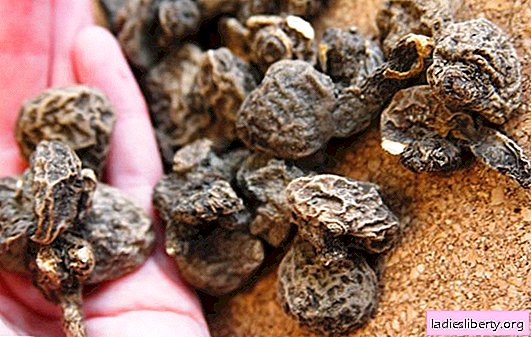
Recently, when planting greenery, anemones are widely used. These herbaceous perennials look very impressive when their petals sway in the wind, for which they are popularly called "anemones". In general, the flower is unpretentious, but it needs minimal care. Under natural conditions, anemone is found in mountains and temperate zones. About how to plant an anemone in the fall, we will consider in detail in this article.
What you need to know when growing anemones
If you plan to plant anemones, then it will be useful to know some secrets for flower care.
• Perennial demanding watering in hot weather.
• Anemones are fed with mineral complexes in autumn, but it is advisable to use organics when planting and during the development of the plant.
• In the midland of Russia, sheltering anemones for the winter is required.
As you can see, caring for a perennial is simple. The main rule of the gardener is to observe the moisture level around the flower.
How to adjust watering
When growing anemones, soil moisture should not be allowed, this leads to the development of rot of the root system. If the plant is overdried, then the flowering will be sparse, new buds will not form. How to organize watering anemones?
In order for the humidity level to be suitable, the flower is planted on raised beds, and a drainage layer is arranged in the planting hole. In this case, the soil surface is mulched with a thick layer of peat or fallen leaves. With this approach, the required level of humidity will remain for a long time.
Water the flower, taking into account weather conditions. If the weather is cool, then watering is carried out once a week. In hot summers, the frequency of watering is increased. If necessary, anemones are watered once a day.
Autumn is the time to plant anemones
It should be borne in mind that in regions with very severe winters, it is better to dig and store the anemone tuber until spring. If the climate allows, then the flower will winter well in the ground. For early spring flowering, anemones are planted in the fall, before the onset of frost.
Choosing a place to land
Experienced gardeners advise growing anemones in partial shade. After all, in too shaded areas, the plant ceases to bloom, and in the open sunny terrain its leaves suffer from burns. The best option would be a flower bed, which is lit only in the morning. The intensity of illumination affects the onset of flowering.
Soil preparation for planting anemones in autumn
Anemone is a very delicate flower, it is grown on fertile, loose soils. Deciduous land with peat is most suitable. If the soil on the site is too dense, then sand and wood ash are added to it.
A bed for planting is prepared in advance, digging it with organics. You can add humus or compost. Do not forget that the rhizomes of plants grow greatly during the season, so when planting leave enough space for their development.
Reproduction of anemones in the fall: how to plant
You can plant anemone with seeds or tubers. Each method has its own subtleties that need to be considered.
Reproduction of anemones by seeds
Experienced gardeners advise using only freshly harvested seeds for the autumn planting of anemones, since they have a short shelf life.
Important! Before the spring planting of seeds, it is necessary to stratify them; in the fall, the need for such a procedure disappears.
When sowing seeds, one must take into account that they cannot be buried in the soil. They should be on its surface. The sprouts of anemones are very fragile, they will not be able to break through a thick layer of soil mixture. Anemone sprouts will appear in early spring, when the snow melts. However, with this method of reproduction, there is a significant minus - fragile seedlings are afraid of waterlogging. How to be in this situation? Experienced summer residents, who managed to successfully grow anemone from seeds, act somewhat differently. Let's look at the photo

• In autumn, prepare wide containers for planting anemones, filling them with a light nutrient substrate, not forgetting to equip drainage and holes for drainage of excess fluid.
• Sowing seeds is carried out in moist soil just before the frost.
• A box with seeds is dug up in the garden until spring, and with warming it is taken out, even before emergence. Stratification has already occurred, but meltwater will no longer be able to harm fragile sprouts.
• Further care for the anemones continues in containers, after which the stronger seedlings are sent to the flower bed.
Flowering of anemones obtained from seeds will begin only in the third year of cultivation.
Division and planting of anemone tubers
In nature, there are many varieties of anemones, the care and cultivation of which is different. There are varieties with root tubers, and rhizome plants. The division and planting of varieties that have a rhizome is carried out in the spring. Since in the fall the plant reacts poorly to transplants. But in the spring, tuberous anemones are more difficult to grow. Here you can’t do without autumn planting.

The thing is that tubers need to be trained to germinate. To do this, during spring planting, they are pre-soaked in water until they swell. This is a rather time-consuming process. But the autumn planting of anemone tubers greatly facilitates the work. Preliminary preparation is not required for the plant. In the spring, meltwater will help the tubers soften enough, seedlings will appear without much effort. The depth of root tubers is 5-7 cm.
Important! During the autumn planting of tubers, the planting pits should have good drainage, otherwise overmoistening will cause diseases.
After Anemone Care: Preparing for Winter
In the southern regions, anemones can be grown without additional shelter. With the onset of cold weather, it is enough to cover the garden with peat or compost. Prior to this, all leaves and stems need to be cut. Under such conditions, anemones hibernate well and in spring, seedlings appear without loss.
In harsh climates, mulching will not help preserve plants. It is advisable to store anemone tubers indoors. To do this, they are dug up, dried and sent for storage. The temperature in the room is maintained at +15 degrees. Further, it is gradually reduced to +5 degrees.
Important! Digging of anemones is carried out after the natural drying of the shoots and leaves.
Note to the grower
• Why do anemone leaves turn yellow?
Spontaneous wilting and yellowing of the leaves of the plant indicates a lack of nutrients in the soil. It is enough to feed the flower with complex phosphorus-potash.
Yellowing of the leaves occurs due to insufficient or excessive watering.
If yellowing of the leaves occurs in the second half of summer, then this is a natural process.
• Snails harm anemones
Anemones are quite resistant to various diseases, only excess moisture in the soil can cause rot. Most often, snails and slugs harm plants, which damage the leaves and appearance of the plant. To save the flower from "uninvited guests" will help frequent spraying with metaldehyde.
Proper care and care will help to grow bright and healthy anemones, which from spring to late autumn will decorate the garden with their petals.











